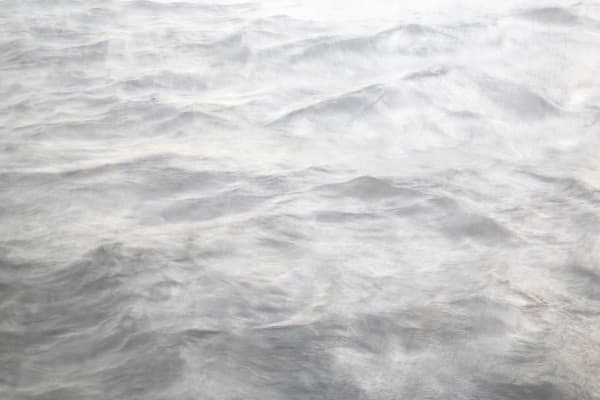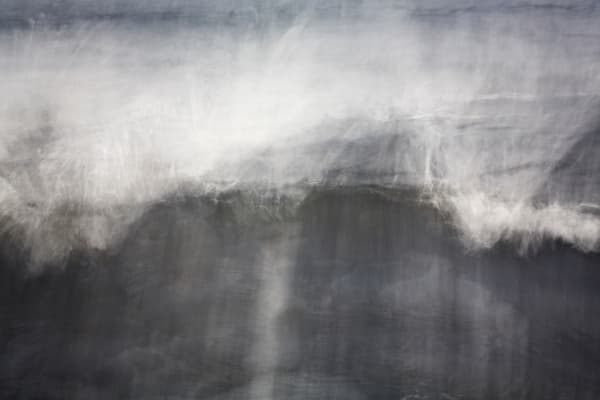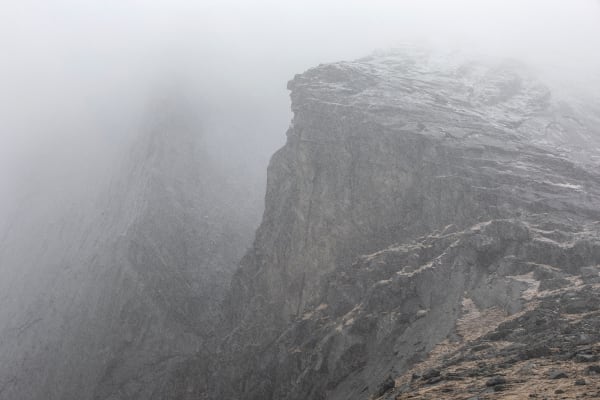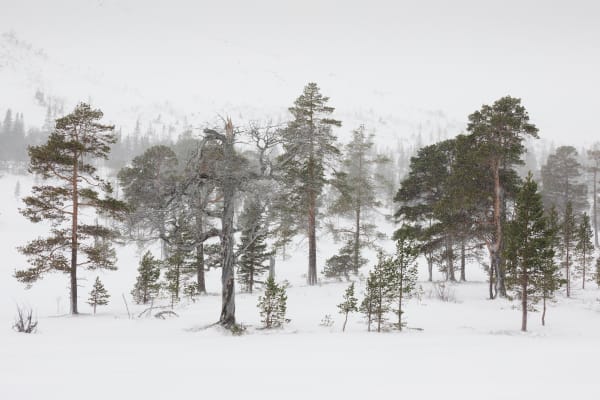Karin Alfredsson: Snow and rain shall pass
Past exhibition
Overview
Karin Alfredsson is an artist and photographer, originally famous for her portraits, who discarded all of her subjects in order to devote herself entirely to her first love - nature. Her uncompromising, naked pictures of barren northern landscapes have caused various art critics to associate her work, not to photography but more to painters such as Caspar David Friedrich, William Turner, August Strindberg, and Gerhard Richter. In fact, many pictures do seem like photorealistic paintings or drawings. But unlike Robert Longo who projects his large-scale charcoal drawings from a Photograph, Karin Alfredsson does not use a template, she captures these rare moments when nature itself seems to paint. What we see is unmanipulated - raw and pure. "I work very slowly, intuitively, returning to the spot in order to get to know the place. Beauty is not my intention but the depths beyond. That which is profound, which just is." It's this process that makes these pictures so special since it's much more about being in the landscape than just taking note of it. By looking carefully at Karin Alfredsson's images, one can sense the commitment and interaction between nature and herself, the time she spends before she presses the shutter button, and the thoughts she invests with her subjects.
"Nature is superior to everything", Karin Alfredsson explains. "It is the only thing that really interests me - beyond words. I am totally uninterested in what is conventionally beautiful, all that is polished. I want to get beyond this, into the depths, and to find the place where I will become part of nature itself. When one has found this place one wants always to remain there. We stand and we fall with nature. It is a matter of respect and humility. This may sound religious but is far from being so. It is always in nature that I feel most alive." Karin Alfredsson started her photographic research into nature about 10 years ago, while wandering, aimlessly, in the wilds. Sometimes she took photographs. She continues to work like this - alone with a tent in autumn, winter and spring and waiting there for days and weeks - waiting for the instant of light, calm, and movement.
Everything that could be called "postcard beautiful" is mercilessly excluded. A flower degrades, as do humans, as does lush vegetation and colors. Still, Karin Alfredsson takes all her pictures/films in color. But the pictures are taken during the time of year when the colors are still in the idea, as well as largely daylight. The color is reduced to shades of gray in graphic denominations from the deepest black to the coolest white. The result is a paradox. The soft shifts of the grayscale take the edge off the built-in brutality of the motifs, but at the same time emphasize the infinity, the grandeur.
In a natural context, "variability" is a sensitive issue. It brings to mind ongoing debates on environmental threats and climate change, Paris agreements and measures to curb emissions, and, in general, the devastating impact of humans on our planet. But Karin Alfredsson does not intend to use her photographs as posts in the environmental debate, where the human struggle rather looks like David's struggle against Goliath, but with an uncertain outcome. Of course, she could have documented erosion as well as melting polar ice caps, rising sea levels, and the shrinking habitat of polar animals, but her photographs go beyond these signs of the effects of the ravages of time (whatever lies behind them). Or rather: rises above. What she portrays is nature and wilderness that seem to transcend all change. A nature which, when seized by rage, illustrates the shortcomings of man.
Additionally to the photographic work series Snow and rain shall pass (mostly from northern Norway and Sweden), the exhibition will also feature her video work "Norra Ishavet" (Arctic Ocean), which was created during an expedition to the North Pole and has just premiered at Liljevalchs Konsthall in Stockholm last December.
-
Karin Alfredsson was born in 1966 on Frösön in Jämtland (Sweden) and has lived and worked in Stockholm since 1989. She is represented at Moderna Museet, the National Art Council, Stockholm Art, and a dozen other institutions and has exhibited in a wide range of galleries and art galleries around Sweden. In 2019, she was awarded the Liljevalch and San Michele Foundation's newly established Capri Scholarship. Galerie Leu is presenting her first exhibition in Germany.
Works
-
 Karin Alfredsson, Snow and rain shall pass, 2018
Karin Alfredsson, Snow and rain shall pass, 2018 -
 Karin Alfredsson, Snow and rain shall pass, 2014
Karin Alfredsson, Snow and rain shall pass, 2014 -
 Karin Alfredsson, Snow and rain shall pass, 2014
Karin Alfredsson, Snow and rain shall pass, 2014 -
 Karin Alfredsson, Snow and rain shall pass, 2020
Karin Alfredsson, Snow and rain shall pass, 2020 -
 Karin Alfredsson, Snow and rain shall pass, 2020
Karin Alfredsson, Snow and rain shall pass, 2020 -
 Karin Alfredsson, Snow and rain shall pass, 2018
Karin Alfredsson, Snow and rain shall pass, 2018 -
 Karin Alfredsson, Snow and rain shall pass, 2022
Karin Alfredsson, Snow and rain shall pass, 2022 -
 Karin Alfredsson, Snow and rain shall pass, 2022
Karin Alfredsson, Snow and rain shall pass, 2022 -
 Karin Alfredsson, Snow and rain shall pass, 2022
Karin Alfredsson, Snow and rain shall pass, 2022 -
 Karin Alfredsson, Snow and rain shall pass, 2022
Karin Alfredsson, Snow and rain shall pass, 2022 -
 Karin Alfredsson, Snow and rain shall pass, 2022
Karin Alfredsson, Snow and rain shall pass, 2022 -
 Karin Alfredsson, Snow and rain shall pass, 2022
Karin Alfredsson, Snow and rain shall pass, 2022
Installation Views




















